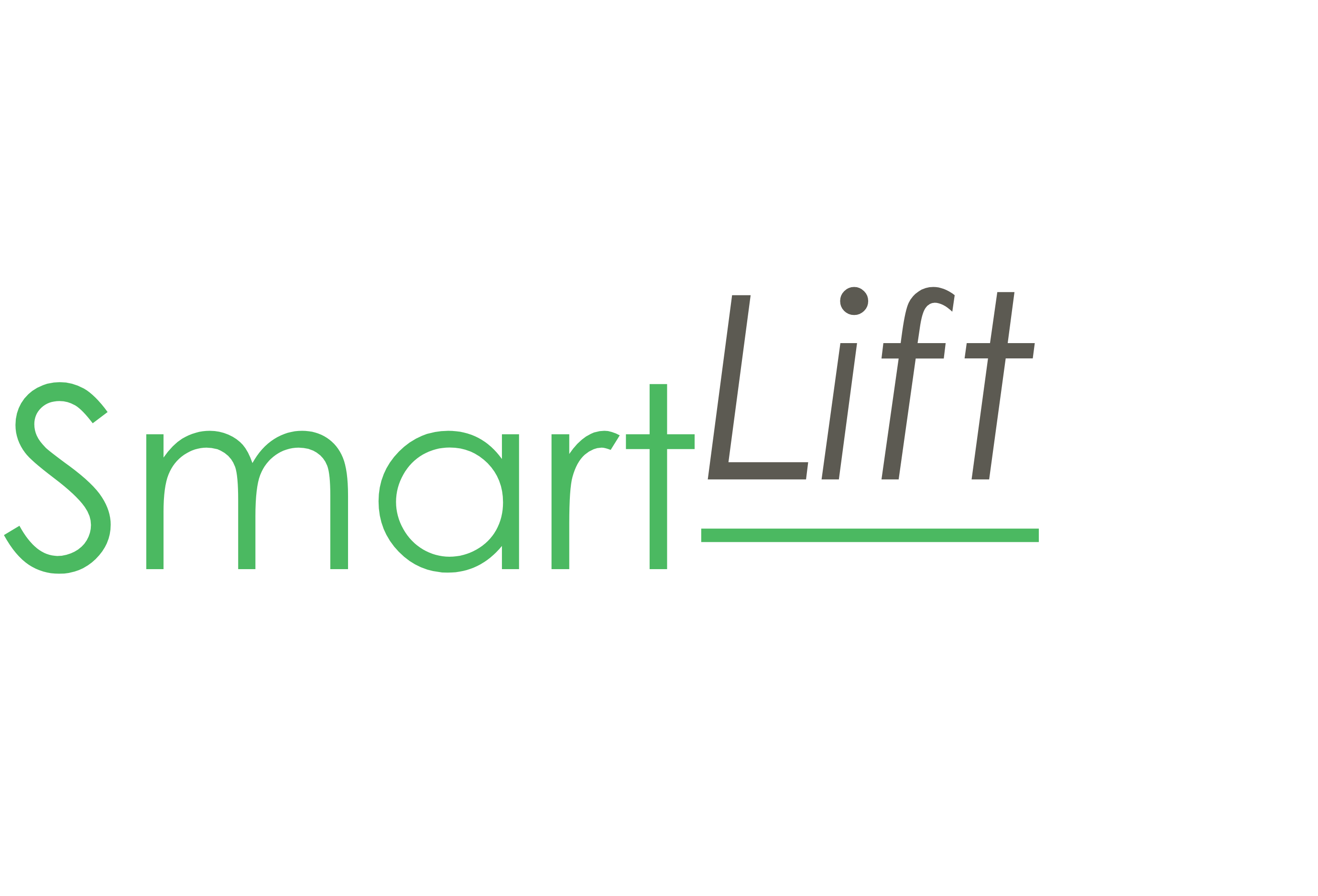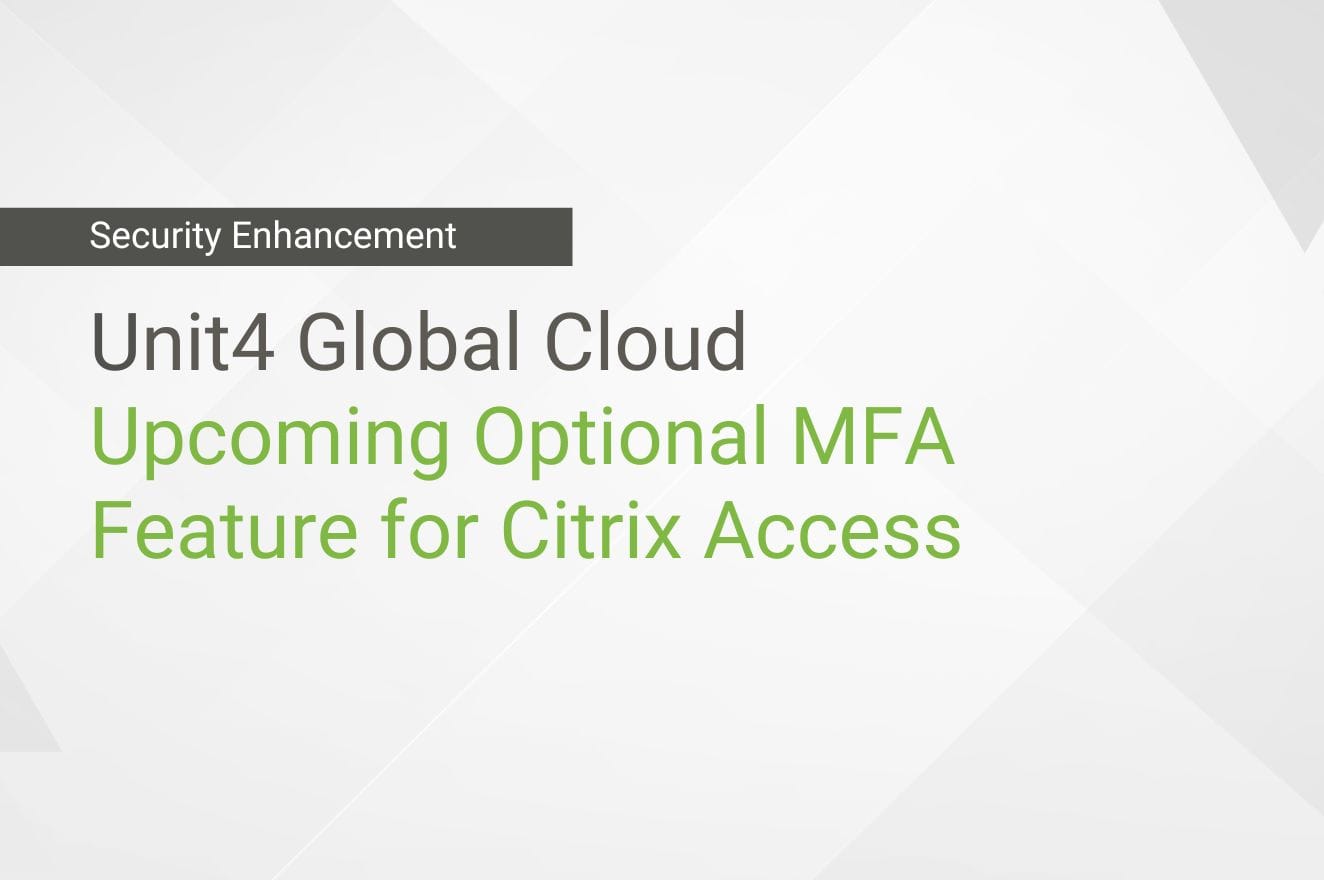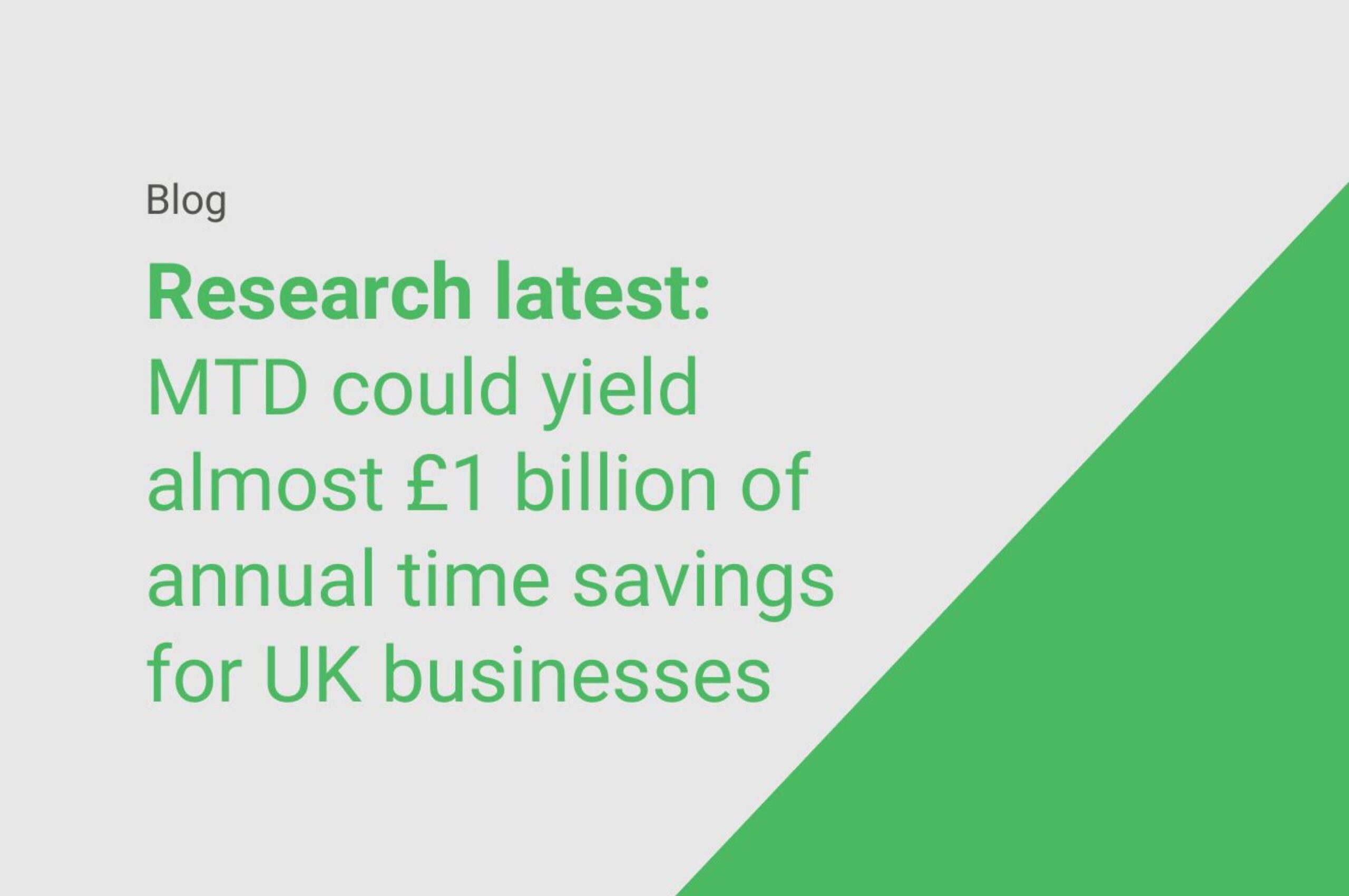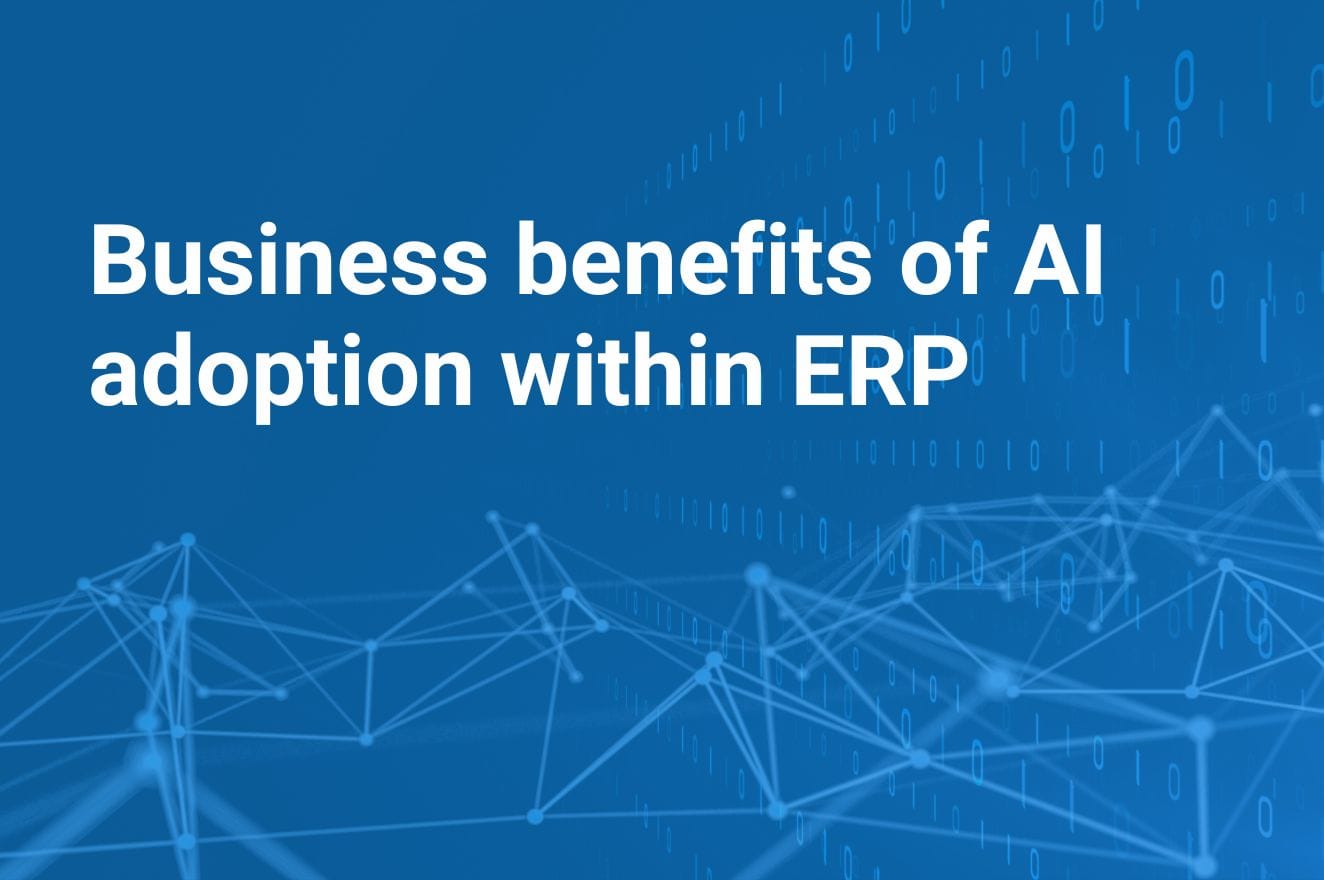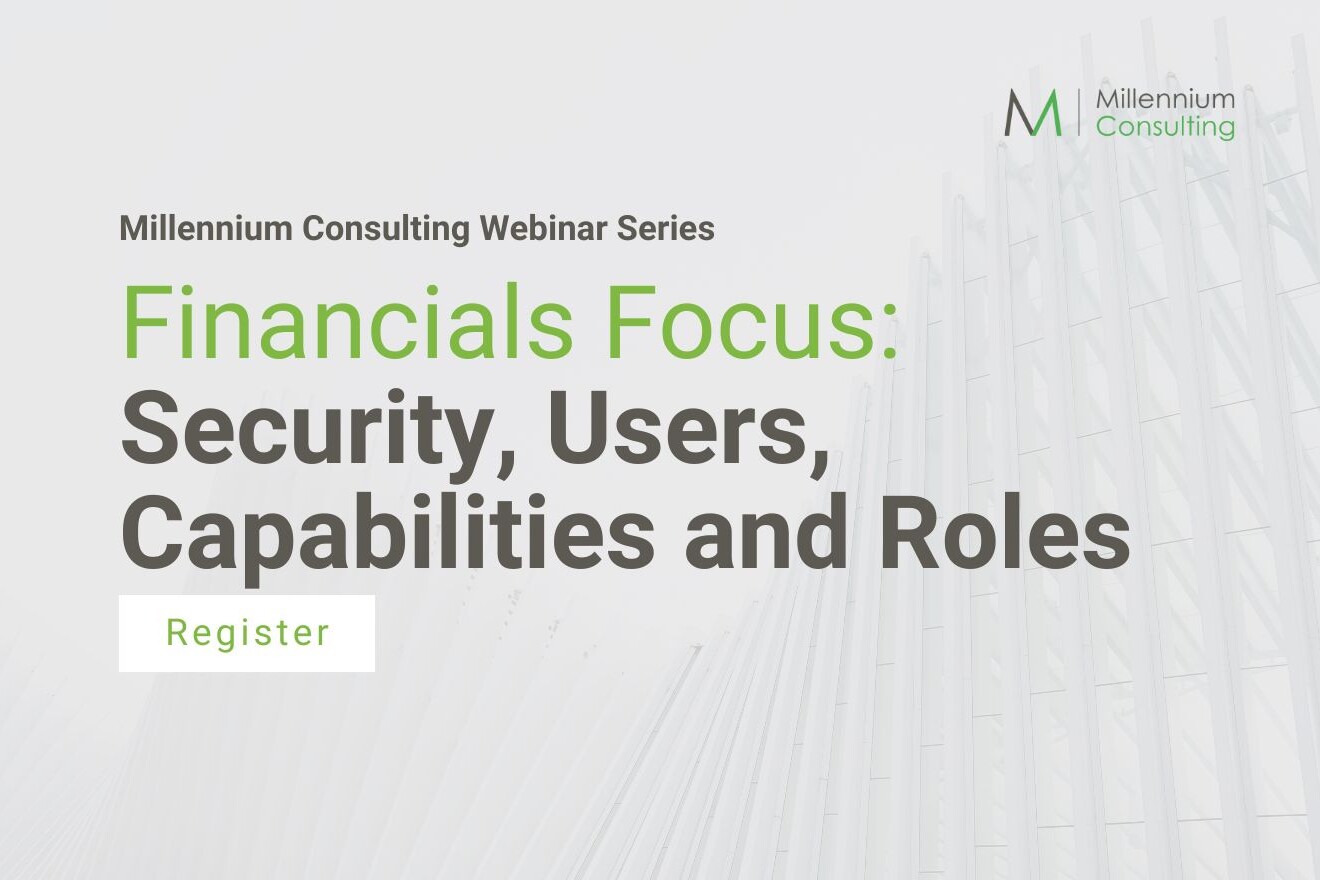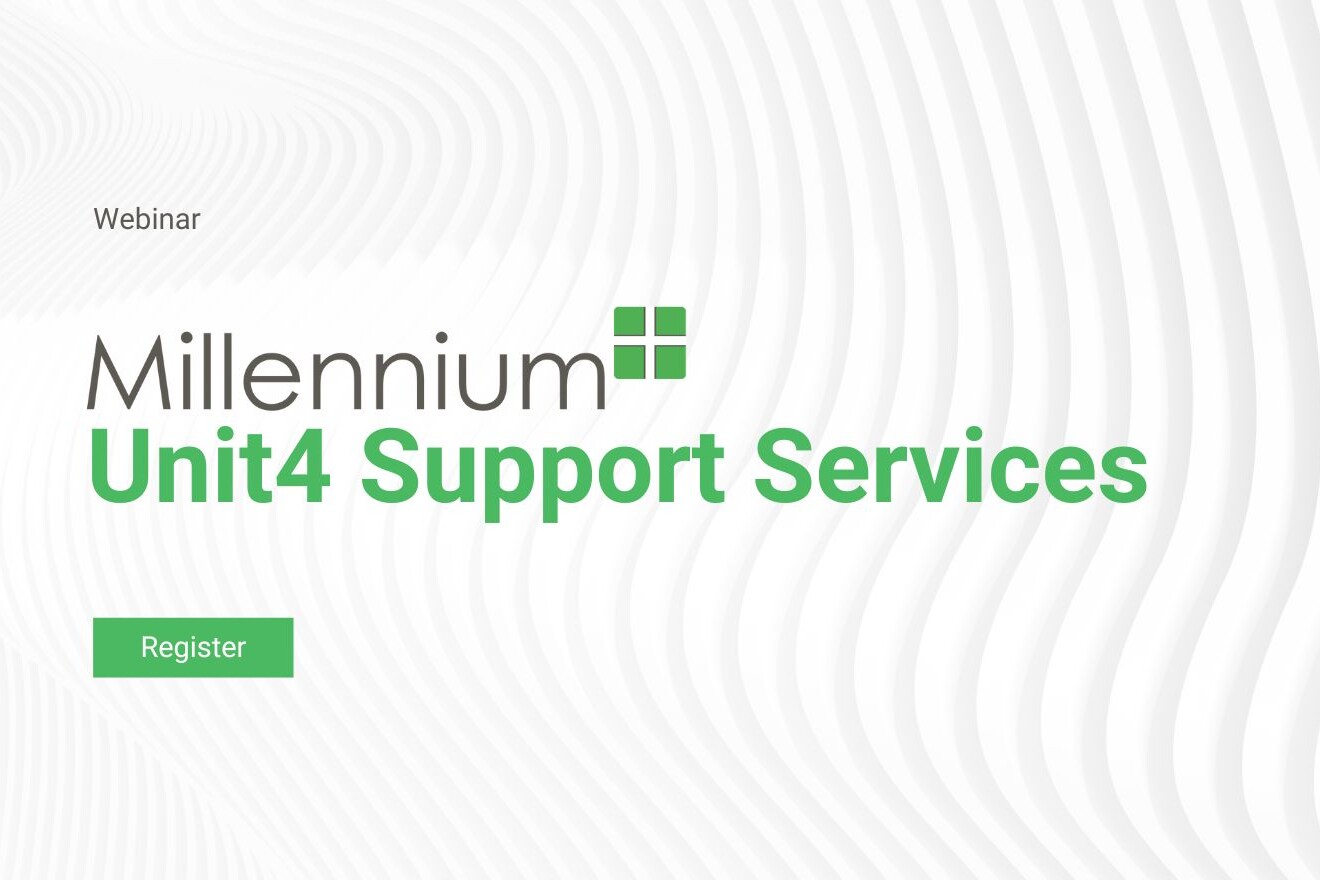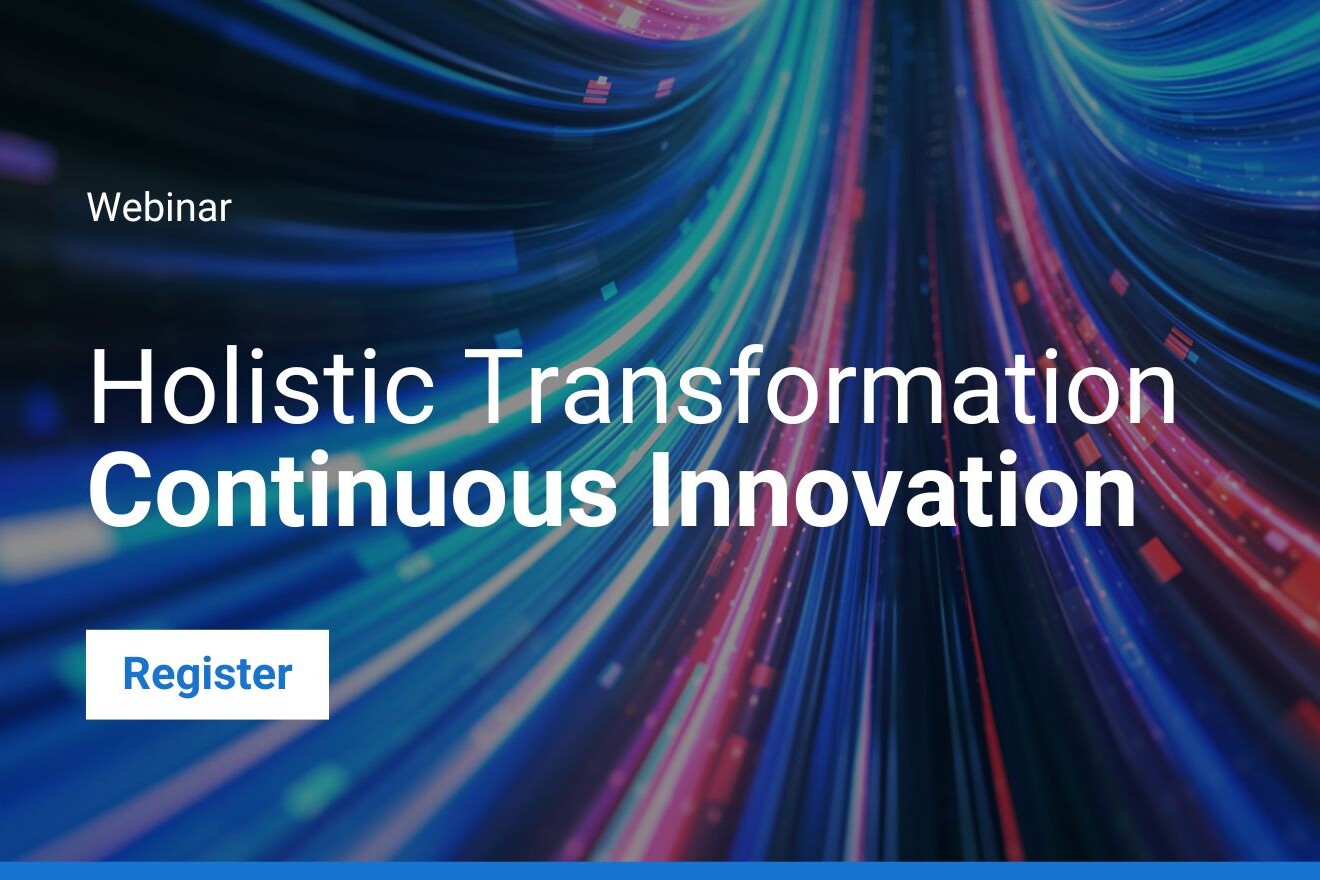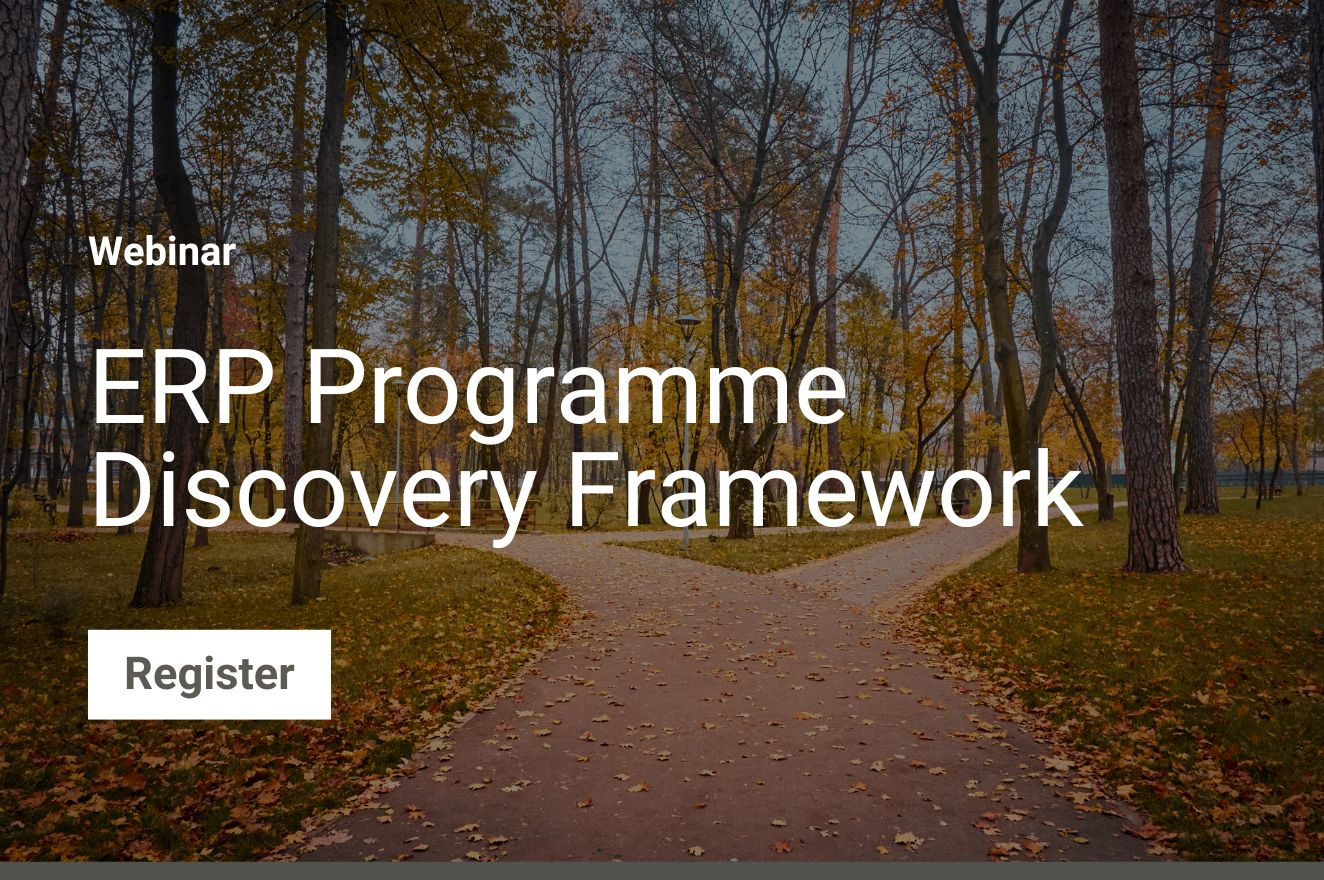SmartLift Webinar
With the wave of ERP Cloud migrations gathering pace, join Millennium this July to learn about SmartLift, the smarter way to upgrade to IFS Cloud.
Upgrading IFS enterprise software to a newer version such as IFS Cloud requires a comprehensive, structured and risk-mitigated methodology.
Millennium’s SmartLift proprietary IFS Cloud Upgrade Methodology has been designed to meet the needs of organisations with complex configurations, integrations and compliance needs in a cost-effective and timely manner.
Taking part
Philip Keet, Millennium Consulting CEO will be joined by David Massey, Cloud Upgrade Head and Clive Godwin, Principal Consultant to introduce SmartLift; the structured, efficient and stress free way to upgrade to IFS Cloud.
Areas Covered
- Discovery: “Like for like upgrade” or Transformation
- Project mobilisation
- Discovery, strategic planning and assessment
- Environment setup and infrastructure planning
- Data and customisation management
- Testing and validation
- Training and change management
- Cutover and Go-Live
- Post-go-live optimisation
- Benefits realisation review
Success factors
- Early stakeholder alignment and business case clarity
- Deep analysis of customisation/integration
- Realistic cutover rehearsals and dry runs
- Strong change management and communication
- Post-go-live support
- Future optimisation roadmap
Unit4 Global Cloud - Upcoming Optional MFA Feature for Citrix Access
Unit4 have announced an upcoming security enhancement:
Multi-Factor Authentication (MFA) will be made available for regular users accessing Unit4 Cloud services via Citrix, starting May 13, 2025.
This feature is optional and can be enabled at your organisation’s discretion. Citrix access will continue to function as it does today unless your designated Citrix administrator chooses to apply the policy to users.
Full setup instructions and supporting documentation for Citrix administrators will be shared closer to the go-live date to support a smooth implementation for those who choose to enable it.
FAQs
This is part of our ongoing commitment to enhance security across our cloud services. MFA adds a second layer of authentication, reducing the risk of unauthorised access, especially for users accessing Citrix-based environments.
No. MFA is optional and fully self-managed. Citrix access will continue to function as it does today unless your organisation chooses to enable MFA for selected users.
Email-based one-time passcodes (OTP) offer a secure and universally accessible method that does not require additional devices or app installations. It’s simple to deploy and use, especially in environments where mobile access is restricted or unavailable.
Your organisation’s designated SuperUser(s) can decide whether to enable MFA for regular Citrix users. Unit4 provides documentation to guide them through the process.
Yes. MFA is fully configurable at the organizational level. SuperUsers can enable it selectively based on your internal security policies and user roles.
Please ensure the user’s email address is correct and accessible. We recommend verifying email records in advance. If issues persist, contact your internal administrator or Unit4 support for assistance.
Published May 2025
Why choose us?
We are an Elite Unit4 Partner
We provide solutions, services, and support across the extensive Unit4 product suite and are experts in delivering transformation.
Research latest: MTD could yield almost £1 billion of annual time savings for UK businesses.
Research latest: MTD could yield almost £1 billion of annual time savings for UK businesses.
New research suggests that HMRC’s Making Tax Digital initiative has streamlined business tax processes, potentially saving up to forty-nine million hours across the UK.
Users of Unit4 Financials by Coda are ideally placed to take advantage of this efficiency saving. Equipped with MVAT, a fully MTD-compliant solution integrated into your existing financial management software, you are all set to simplify your workflows for VAT and all future MTD compliance obligations.
MTD promised a lighter tax workload. Has it happened?
When the government unveiled its Making Tax Digital (MTD) project a decade ago, one of the stated aims was to make tax processes more efficient for businesses. This would reduce the need for manual data entry and calculations, lower the risk of error, and simplify the tax submission procedure.
As a rule, promises made by the taxman to make life easier are always going to be met with a certain degree of scepticism. So, three years after mandatory MDT compliance for VAT, has it made any difference?
To find out, HMRC commissioned the independent research agency, Kantar Public (now Verian), to establish the impact of MTD on businesses using fully functional Making Tax Digital compatible software. Published on 27 February 2025, the research covers the first full tax year of mandatory VAT compliance (2022-2023) and is based on a survey of 2,300 businesses. The full findings are available here.
Key findings
- Thirty percent of businesses say they get more done per hour when managing their finances and record keeping, compared to before the introduction of MDT.
- On average, there has been a 4.3% decrease in time spent on finances and record keeping since the introduction of MDT.
- For the 2022 to 2023 tax year, an estimated total of between thirty-two million and forty-nine million hours were saved by all UK businesses using fully functional software.
- The estimated total value of time saved by all businesses was between £603 million and £915 million.
- Of those businesses that had saved time through MTD, 66% said they had used that extra time to increase productivity at work.
Efficiency savings are not automatic: they depend on the underlying software.
HMRC allows businesses to have multiple systems in play regarding VAT, so long as they use bridging software to facilitate a digital link between data stored in spreadsheets and HMRC’s portal. Some businesses, particularly those with legacy systems, use digital links to avoid overhauling their record-keeping methods.
It is important to note that only businesses using fully functional MTD-compatible software were included in the survey results, i.e., those companies still using bridging software were discounted. On its own, bridging software does not fulfil other core MTD requirements (e.g., maintaining digital records and ensuring digital links between data).
Meeting the minimum MTD compliance requirements does not, in itself, lead to efficiency savings. If you are still using a combination of spreadsheets with digital links, you must ensure that VAT data is correctly formatted and imported into the bridging software before submission. Errors in formulas or data formatting can still lead to compliance issues, and care needs to be taken to ensure that spreadsheets are appropriately structured and that digital links between records are maintained.
MTD software for Unit4 Financials by Coda: full functionality equals maximum efficiency.
In the run-up to MDT VAT submissions becoming mandatory, many businesses were keen to reach a state of compliance in as short a time as possible. For many, setting up digital links was the obvious answer as a kind of stopgap workaround.
But if a temporary solution becomes a permanent fixture, you will still have to grapple with a less-than-ideal workflow. You are compliant but failing to realise the efficiency savings that MDT was designed to deliver.
Ideally, the software you use should help you achieve several things:
- As a minimum, it needs to be compliant with HMRC’s mandatory requirements (capable of digitally storing all records, automatically calculating VAT, and submitting them directly to HMRC)
- It should be easy to use, both in terms of a straightforward, easy-to-navigate interface, and in terms of not requiring users to jump between different applications for different tasks.
- VAT reporting should sit seamlessly alongside other linked activities (e.g. bank reconciliation, invoice tracking, and tax forecasting), in a single solution.
- Ideally, it should be easy to implement and cost-effective; in other words, deploying it should not be a major disruptive project.
- With an eye on the future, it should also provide a framework to help you comply with other MTD initiatives that are likely to be with us soon (MTD for Corporation Tax, for instance)
Thanks to MVAT from Millennium Consulting, Unit4 Financials by Coda users are ideally placed to tap into these benefits. MVAT is a HMRC-recognised, MTD solution built by Coda experts specifically for Unit4 users. Quick and easy to implement, you can do everything in one place: run your VAT reports, import summaries, drill into individual transactions, submit returns to HMRC, and more. The result? You are all set to realise the efficiency and productivity improvements that MTD was designed to deliver.
Next Steps
To streamline your VAT reporting and to futureproof your processes in readiness for further MTD initiatives, learn more about MVAT here.
Business benefits of AI adoption within ERP
Business benefits of AI adoption within ERP
The emergence of artificial intelligence (AI) is transforming nearly every industry and facet of modern life. Everyday tools such as Siri, Alexa, and Google Assistant handle reminders and information retrieval, while platforms such as Netflix, Spotify, and Amazon use AI to deliver personalised recommendations. Even navigation apps like Google Maps now rely on real-time AI analysis to optimise routes.
In the world of enterprise technology, embedding AI into ERP systems has supercharged their capabilities, enhancing efficiency, reducing manual effort and enabling more strategic decision-making. AI brings a powerful layer of intelligence to core business functions such as finance, supply chain and HR, allowing organisations to automate, optimise and even predict outcomes that previously relied on human intervention.
AI can automate routine and repetitive tasks such as invoice processing, approvals, purchase order generation, payroll, and more. Through natural language processing (NLP), users can make simple, intuitive requests like “Generate a cash flow forecast for the next six months”—without having to dig through multiple reports.
It also improves forecasting. By analysing historical data, seasonality and external variables, AI can project sales, demand, inventory needs and cash flow. It can detect potential disruptions, such as supply chain delays, before they occur thus enabling preventative action and a more agile response.
With embedded intelligence, ERP systems can provide timely, actionable insights such as:
“Demand for Product X is expected to spike, consider reordering now.”
“This vendor invoice is inconsistent with past entries flag it for review.”
AI optimises routing, scheduling and inventory management across warehouses to reduce waste and increase efficiency. Logistics operations benefit from real-time decision-making, such as selecting the best carrier based on cost, speed and reliability. It can also detect anomalies such as spikes in expense claims or inventory mismatches and help prevent fraud whilst maintaining compliance.
AI-powered chatbots enable users to interact with ERP systems using natural language commands and make it easier to run reports, navigate modules and input data. In HR, AI supports workforce planning, recruitment, performance evaluation and employee retention by analysing engagement data, predicting turnover and recommending development pathways or training.
Machine learning (ML) allows ERP systems to continuously learn from data interactions which over time leads to more accurate predictions, better recommendations and more intelligent business decision making.
Organisations that rely on legacy ERP systems which don’t incorporate AI are at a growing disadvantage compared with AI enabled users. Older systems are often unable to process large data volumes in real time and lack automation, requiring greater manual effort and there will be an increased risk of human error. Legacy ERP is typically rigid and hard to adapt to new business needs offering a poor user experience and requiring extensive training. They struggle to integrate with modern platforms which lead to siloed data. They also lack modern cybersecurity and AI-driven threat detection. Higher operational costs, slower innovation and reduced agility in responding to market shifts are all common features of older ERP platforms.
AI-enabled ERP platforms have redefined how organisations operate, unlocking efficiencies, driving smarter decision-making and enabling a more agile, data-driven approach to business. The commercial advantages of AI adoption are clear and those organisations that embrace this evolution will be well placed to become market leaders.
If you’re ready to explore how AI-enabled ERP software can help you achieve your business objectives, contact Millennium Consulting to discuss the right solution for your organisation.
Unit4 Financials by Coda in-person event
Save the date
Unit4 Financials by Coda in-person event
Wednesday 24th September 2025
We are delighted to announce a date for your diaries.
On Wednesday 24th September, the Unit4 Financials by Coda event will take place in Birmingham.
More details about the keynote speakers and agenda will be shared soon. In the meantime, register your early interest.
Did you know...
We are an Elite Unit4 Partner
We are an Elite Unit4 partner and a leading reseller around the world. That means we have the knowledge and experience to design, implement and support the right Unit4 Financials solution for your business. We also make it easy to extend your system, providing additional applications that allow you to augment and tailor your solution to more closely meet your needs.
Unit4 Financials 2025 Q1 Release
Unit4 Financials by Coda 2025Q1 was made available on 11th March 2025.
Highlights of the 2025Q1 release include:
Administration:
Tasks
The Table Link Document Housekeeping task has been enhanced to include:
- a ‘User-defined status’ option, enabling the removal of non-system statuses.
- a ‘Document Date’ range, enabling the deletion of data within a specified date range.
Finance:
Undo Matching
Undo Matching now uses the browse limit on the user capability and the browse limit set on the Financials console when selecting data.
The transaction limit applied is the lower of the two settings. If this limit is exceeded no data is returned and the user is requested to select less data.
Company Master
You can now specify the default posting destination (Finance or Invoice Matching) and the Invoice Matching posting settings (Input Template Master and Mapping Master for invoices and credit notes) on the Company Master for use in Electronic Invoicing.
Element Master
You can now specify the posting destination (Company Master, Finance, or Invoice Matching) and the Invoice Matching posting settings (Input Template Master and Mapping Master for invoices and credit notes) on the Element Master for use in Electronic Invoicing.
Copy Company
External copy company has been changed to remove a stored procedure which was used when copying element masters. This change has been made to improve the upgrade process.
Electronic Invoicing:
API
The Electronic Invoicing REST resource is now available to allow authorized users to submit a UBL Invoice or Credit Note to Invoice Matching using input type Header and Tax entry types ‘Total only’, ‘By tax code’ and ‘By tax code with turnover’.
Mapping Master
A new Invoice Matching tab has been added to Mapping Master to define how additional data in the UBL is mapped to the transaction to be created in Invoice Matching.
Invoice Maintenance
The Invoice Maintenance screen has been enhanced to include more detail on failed submissions and to allow the rows to be sorted.
Public API:
REST API
The navigation and performance of the REST API documentation has been improved.
The REST API definition has been improved to better represent enumerated types. The API now indicates the set of valid values for enumeration types.
Miscellaneous
Message Transport Master
It is now possible to use Microsoft Graph API when sending emails.
File Encryption (PGP)
PGP encryption is now available using HTTP POST to send files to Extension Kit. A sample Extension Kit Flow (file_encryption_pgp.json) has been created to demonstrate this process and is available on the .iso and also via Community4U.
Technical:
Deprecated features:
The .NET router has been deprecated. The final release has not been determined.
The Integration Toolkit Command Centre module (ITK) has been deprecated and will be removed in a future release. The final release has not been determined.
Removed features:
32-bit XL has been removed. Please use the 64-bit XL. As a result, there is a new version of XL. Functionally it is the same as the 2024Q4 release of XL.
Therefore, there is no requirement to update to this version.
Security Updates
- Third party libraries Apache HttpClient and Java Native Access have been updated to improve security.
- A third-party library, Netty, used in the Unit4 Message Hub integration has been updated to improve security.
General Fixes/Updates:
- An issue in Billing when posting documents with analysis line flexi-fields to Finance has now been resolved.
- The ‘Exclude zero lines on posting’ setting is now ignored if the Billing document has analysis line level flexi-fields.
- In certain circumstances Undo Year End would fail to complete. This has been corrected
- Print Customer Statements performance has been improved.
- Property com.coda.finance.app.customerStatementSelectionSize is now documented in the Configuration Settings Guide.
- Customer statements sent via FTP/SFTP now appends a date and timestamp to the file name to make it unique.
- The Electronic Invoicing endpoint now authenticates when using OpenID Connect and Authorization Code Flow with PKCE is configured as the web application flow.
- An error which prevented the Audit Trail configuration tool from starting has been corrected.
- An issue relating to the customisation of standard forms such as element master (finance/elmmasmain.frm) has now been resolved.
- The system will now recover from transient external failures, such as a DNS outage, rather than require a restart.
Further details on the new features, security updates and reported issues can be found in the release documentation.
The release documentation for this release (and previous releases) can be found in the documentation area on the community.
The software can be downloaded from the “Software” tab on Community4U.
Are you making the most of Unit4 Financials by Coda?
Our Systems Health Check is designed to help you identify areas where you may be able to improve performance and ensure you extract the maximum benefit from your investment in Unit4 Financials by Coda.
ROI linked to cloud migration is soaring. This report illustrates why
APRIL 2025
ROI linked to cloud migration is soaring
This report illustrates why
The financial case for cloud migration has always been a compelling one. And as the costs associated with on-premises deployments continue to rise, that case is now impossible to ignore.
A recent study from global technology research specialists Nucleus Research found that cloud migrations returned $3.43 for every dollar spent on the migration project. A subsequent follow up showed that in 30 months, that had increased by 12.5%.
Read the full report for more details on the following:
On-premise hosting
Practically all areas of business operations have felt the effects of rising costs in the last few years. Cloud costs have increased. Crucially, however, the costs associated with on-premises operations have increased even further.
The price of hardware components and maintenance, an increased compliance burden, personnel costs, and energy: the report illustrates how rising costs in these areas make on-premise systems less and less attractive.
Pain-free, cost-effective migration
Lengthy and costly migrations benefit neither software vendors nor customers. To reflect this, reputable vendors and their trusted partners seek to make the process as smooth as possible. Discover what this means regarding lower cost barriers and more rapid return on investment.
On-premises costs will continue to increase
In terms of both the capital expenditure and the management overhead associated with legacy on-premises IT ecosystems, the future does not look bright.
Discover what this means and how it will cause the benefit-to-cost ratio of cloud migration to increase even further over the next couple of years.
The wider case for cloud migration: further resources
For any head of IT or finance looking for practical ways to curb capital technical infrastructure spend and day-to-day operational costs, the case for cloud migration is becoming increasingly strong.
But it’s not just about cost savings. Strategic advantages like scalability, flexibility, and performance make cloud migration a critical step for future-ready businesses.
At Millennium, we have helped countless businesses migrate to the cloud, successfully guiding organisations across all industry verticals. With many more migrations underway, we know the challenges companies face—and how to make the transition smooth, fast, and cost-effective.
That’s why so many businesses turn to Millennium to guide them through the process.
ERP Programme Discovery Framework
This May join Millennium Consulting CEO Philip Keet and Clive Godwin Senior Programme Delivery Lead as they introduce the ERP Programme Discovery Framework that delivers a comprehensive ERP systems review which evaluates current platform architecture and identifies potential future state options in a structured, strategic way that is essential to maximise Return on Investment (ROI) and deliver additional bottom line profit.
As technology evolves, organisations need to decide whether their existing ERP platform remains fit for purpose or whether they need to upgrade, re-engineer, or adopt a new one. An independent review of the current state and exploration of how future state ERP architecture can best serve the needs of the organisation is invaluable.
Scheduled for Thursday 22nd May 2025 from 3:00 PM to 3:30 PM GMT
Philip Keet
Millennium CEO Philip Keet has been supporting global organisation stake holders with ERP change programs for thirty years and possesses a deep understanding of the challenges multinationals face as they use technology to achieve competitive advantage in an increasingly challenging commercial environment.


Clive Godwin
Clive Godwin is a senior programme delivery lead of 30 years, who has successfully managed ERP rollouts, post-merger integrations and software development across the Financial Services, Telecoms, and Retail sectors. He is a trusted partner to global firms such as Bain Capital, NTT Data, Atos, Hertz, L&G, Virgin Media, Littlewoods, BT and Vodafone. Clive is a best practice ambassador combining PRINCE2, MSP, SAFe Agile and Hybrid Waterfall, ensuring a smooth delivery of fit-for-purpose solutions for multi-national organisations.
Could you be fooled by a deepfake? Why CFOs need to boost their cyber awareness
Could you be fooled by a deepfake? Why CFOs need to boost their cyber awareness
Over the past few years, the social engineering threat has stepped up a gear, with criminals putting AI to work to mount spectacularly convincing fraud scams. As keepers of the purse strings, corporate finance professionals are prime targets in this new wave of cybercrime.
Here’s a closer look at the evolving social engineering landscape and the guardrails you should have in place to keep your business safe.
Deepfakes: no longer the stuff of sci-fi
Last year, CFO Dive reported how the UK engineering group Arup lost approximately $25 million after scammers used AI-generated “deepfakes” to pose as the company’s CFO and dupe an employee to transfer cash into a number of bank accounts. An Arup staff member got a fake message, claiming to be from the company’s CFO, regarding a “confidential transaction”. Following a video conference with the false CFO and other AI-generated employees, the employee executed transactions to five different Hong Kong-based banks.
In July, a Ferrari executive received a series of messages from an unknown number, purporting to be from the company’s CEO, Benedetto Vigna. The messages detailed a company acquisition, advising the Ferrari exec to maintain discretion and that an NDA would be needed. Following the texts, the executive received a phone call from the same number, with the caller mimicking Vigna’s distinctive voice (subsequent inquiries revealed that this had been created with an AI voice clone). Despite the scenario’s plausibility, the executive grew suspicious of certain aspects of the caller’s intonation. The exec asked the caller the name of a book Vigna had recommended to him just a few days earlier. The call suddenly ended.
How common is the deepfake problem?
Evidence suggests that sophisticated AI-driven fraud is now part of the mainstream.
A 2024 Medius poll of 1,533 US and UK finance professionals suggested that just over half (53%) of corporations have been targeted with financial scams using deepfake technology, with 43% falling victim to such attacks. Another report suggested that in 2023, deepfake incidents targeting the fintech sector increased by 700%.
According to Deloitte’s Center for Financial Services, total losses from financial fraud in 2023 amounted to $12.3 billion. By 2027, generative AI is predicted to enable losses to reach $40 billion.
The most popular deepfake techniques include the following:
- Deepfake voice scams. With just a few seconds of audio, scammers use AI tools to clone a person’s voice. They then make fake phone calls or submit voicemails impersonating key company insiders
- Deepfake video scams. Based on snippets from, for example, YouTube or corporate webinars, AI can generate fake video footage of a real person. The level of sophistication in this area has now reached a point where it is possible to clone a company executive’s face and voice to conduct entire real-time video conference calls
- Fake ID and social media scams. AI can generate realistic fake profile pictures for scam accounts. These profiles can then be used as broader corporate fraud attempts
- Fake AI-generated documents. AI can create counterfeit passports, IDs and other documents. These forgeries can help scammers bypass security checks in financial fraud and identity theft scams
A big part of the problem is that deepfake technology is available to pretty much anyone – if you know where to look. A booming dark web cottage industry sells scamming software of various levels of sophistication from $20 to thousands of dollars. You do not need advanced AI skills to mount an attack; you need cash.
Deepfakes and the wider social engineering landscape
Phishing – i.e. scammers attempting to trick people into revealing sensitive information – has long been part of the cyber threat landscape. An estimated 3.4 billion emails a day are sent by cybercriminals, designed to look like they come from trusted senders, which amounts to over a trillion phishing emails per year.
Finance leaders must be especially wary of ‘bespoke’, personalised attacks. Spear phishing is where messages – ostensibly from a known or trusted party, such as a supplier or customer – are sent to targeted individuals to induce them to reveal information or take specific actions. A highly refined version of this is known as “whaling”, where precisely engineered spoofing messages are created to trick CEOs, CFOs, and other senior stakeholders.
According to Barracuda, spear phishing campaigns make up only 0.1% of all email-based phishing attacks but are responsible for 66% of all breaches. The more targeted and personalised the social engineering campaign, the more likely it is to be successful.
Against this backdrop, deepfake technology extends the fraudster’s toolkit. It sits alongside existing phishing techniques, injecting them with an extra layer of realism.
For example, an attacker does some homework on your company. They obtain the details of your CEO and finance team members via LinkedIn. They hone in on an individual whose job title suggests the authority to execute substantial cash transfers. Looking at the company news section of your website, they also notice details of a couple of new deals or partnerships that they can use as possible backdrops from which to concoct a story.
Lifted from a webinar on your site, they have an excellent data extract of your CEO’s voice. Using a replication tool purchased on the dark web, they can use this for cloning and live voice manipulation.
Using a spoof email, they message the finance team member, pretending to be the CEO. The message requests a quick chat to discuss an urgent transaction. A call is arranged, and the fake CEO tells the employee where to send the cash.
How to prevent deepfake attacks
Good practice includes the following:
Raise awareness
Most cyber attack techniques rely on human vulnerability, carelessness, and/or a lack of awareness on the victim’s part. This applies to all types of social engineering, including deepfakes.
As we’ve seen, there’s nothing new about phishing, so you should have awareness training in place already (if not, this is an area that needs to be addressed). This should include training on the telltale signs of phishing to look out for, such as irregular email domains or attachments, display name mismatch, or an undue sense of urgency within requests.
Update your training to cover the threats raised by advanced AI. This should include the signs of deepfake attacks, such as unnatural facial movements and expressions, slight visual distortions and imperfect lip synching in video, and slightly robotic speech patterns and inconsistent tone in audio.
Have set procedures in place
Scammers thrive on inconsistency. If payments are routinely made in an ad-hoc way within a company, it becomes much more challenging for employees to spot a fake email, call, or Zoom session from a genuine one.
Especially for financial transactions, ensure you have set consistent protocols. Examples of this may include:
- The requirement that every request needs to be accompanied by an invoice and submitted in a set format
- Multi-factor authentication, e.g. requiring at least two levels of authentication for payment approvals
- One-time passwords for high-value transactions
- Multi-person approval systems
- A strict call-back policy for unusual requests
Ensure that the rules apply to everyone
Threat actors also prey on the fact that a kind of “Do you know who I am?” culture exists in many organisations. It’s easy to pull rank if you’re a senior exec. So, if you need a payment to be actioned, instead of following the relevant workflow, you telephone someone in accounts and tell them to make it happen.
This is precisely why highly personalised attacks involving senior stakeholders are so popular with fraudsters. If people at the top are routinely bypassing your safeguards, they start to lose effectiveness quickly!
What next? Future-proofing your information security stance
The rapid rise of deepfake attack techniques in such a short time highlights that no company can afford to stand still when it comes to cyber security. Risk analysis, awareness training, multi-layer defence strategies, and optimisation of transaction procedures all demand regular reappraisal and constant vigilance.
So are you currently making the right choices regarding keeping your business safe? Where are your vulnerabilities, and how can they be addressed? This is where Millennium Consulting can help. Combining expertise in cybersecurity and optimisation of office of finance processes, our consultants can review your existing processes, identify your weak points, fill in any skills gaps you may have, and ensure the implementation of an information security framework tailored to your specific needs.
Millennium Consulting Awarded ISO27001 & ISO9001 Certification
January 2025
Updating and re-validation of our ISO 9001 & 27001 certification to the globally recognised UK Government UKAS standard. The ISO 27001 certification now aligns with the latest ISO 27001:2022 standard.
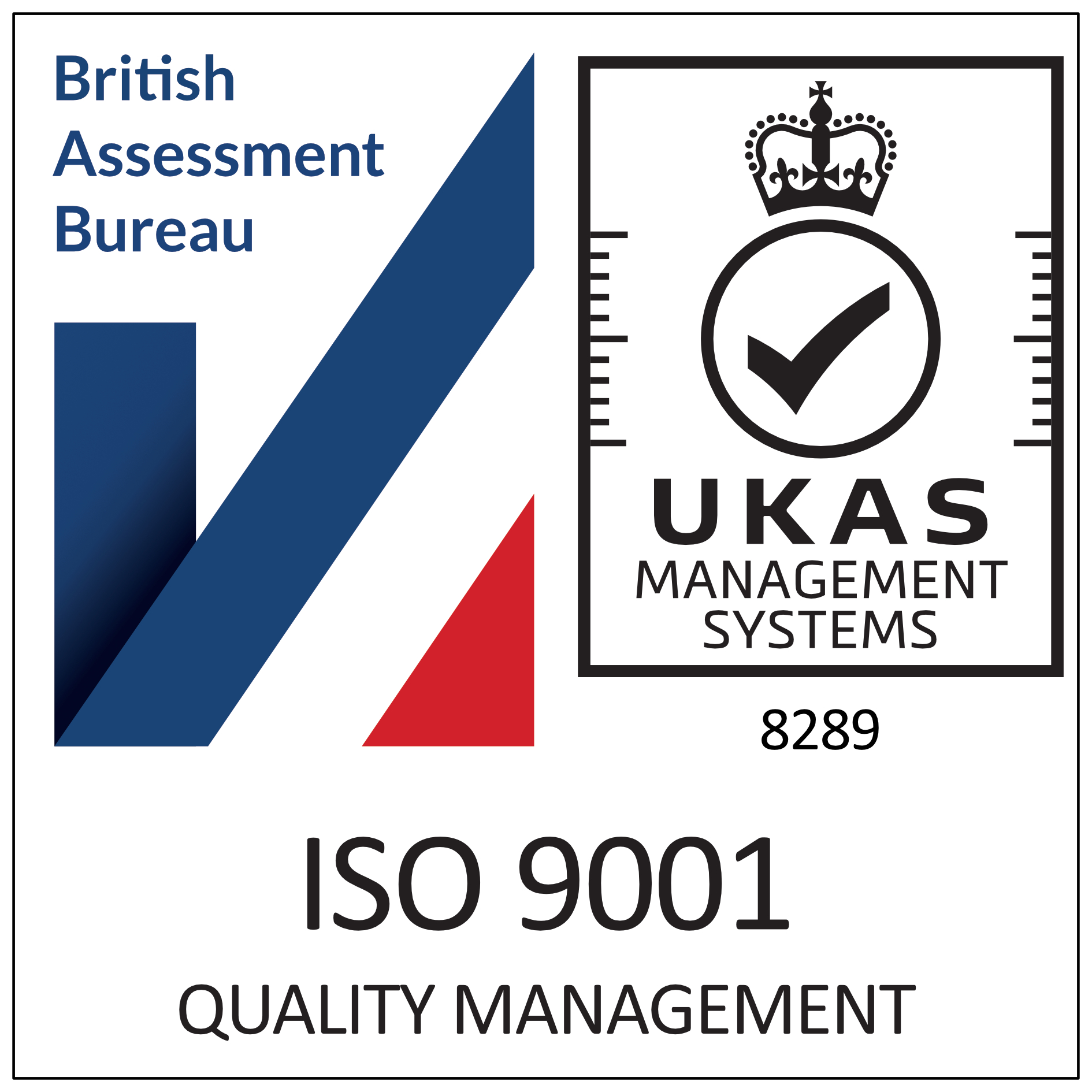
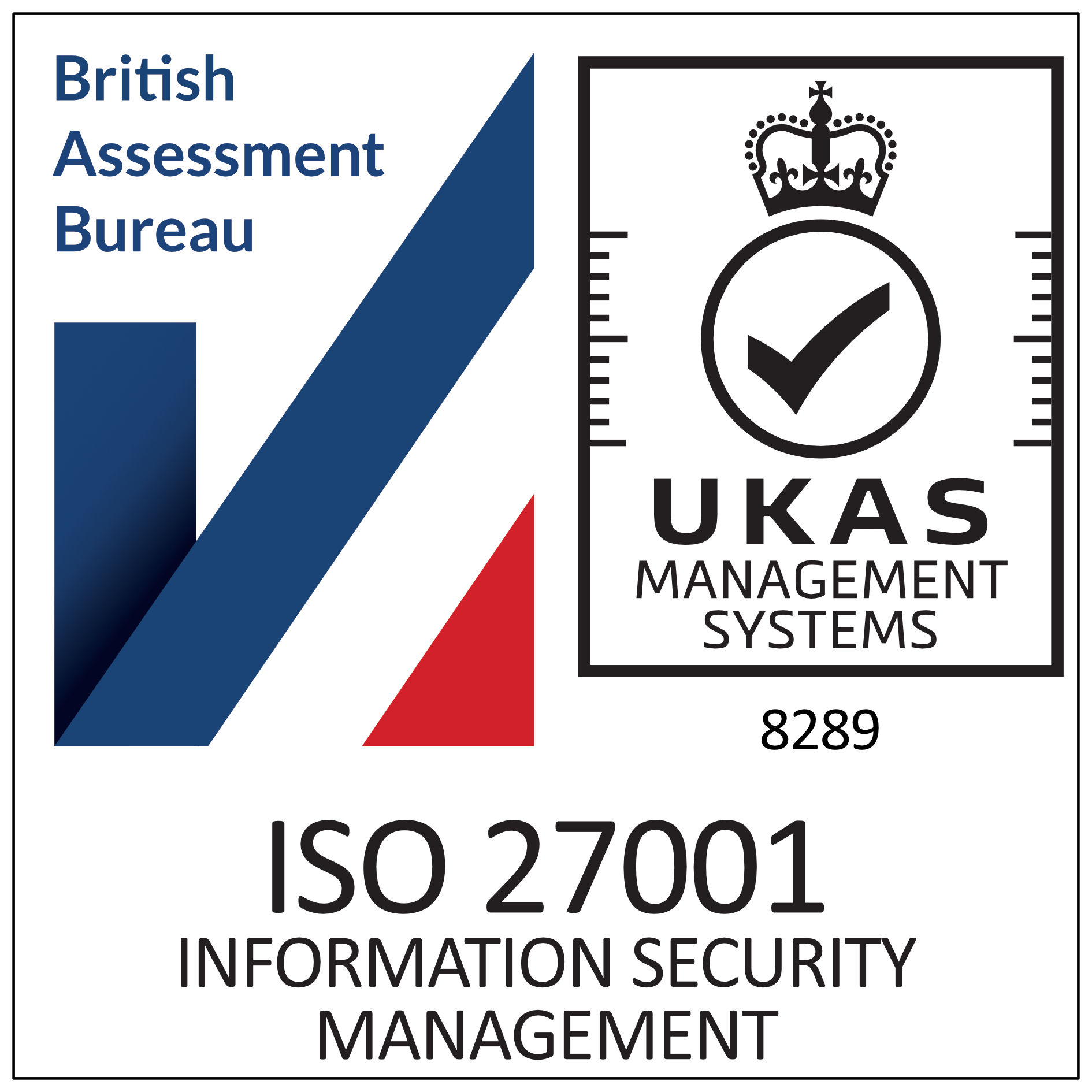
Information Security Best Practice: what to look for when choosing a consultancy partner
Information Security Best Practice: what to look for when choosing a consultancy partner
Your business takes its cyber and information security obligations seriously. But can the same be said of your partners? When appraising potential consultants and service providers, these are the trust indicators to look for.
Avoiding exposure: What makes a technology consultancy a potential infosec weak point?
What attributes do you look for when choosing a consultant to work with? Inside-out knowledge is a must-have. So, too, is responsiveness; you need a partner who ‘gets’ what you need and will work with you to deliver it. And especially when it comes to digital transformation, most decision-makers also want to see clear evidence of program success: “This is a significant move for our company, so can this consultancy actually deliver what we are aiming to achieve?”.
Alongside this, information security is a further area you need to look closely at. With any technological consultancy arrangement, there is an element of handing over the keys to the kingdom or, at the very least, a back-and-forth flow of some sensitive information. Depending on the project, your partner will need detailed information about – and often, direct access to – critical systems, processes, and data.
Threat actors are all too aware of this. They know that when they successfully infiltrate a professional services provider, IT consultancy, or software implementation partner, it potentially opens a rich treasure trove, exposing sensitive data relating to each and every one of their target’s clients.
According to Security Magazine, third-party attack vectors are responsible for 29% of all breaches. Three quarters of these third-party breaches are linked to software products and technological services.
An estimated 60% of organisations use cyber security risk as a key factor when determining transactions and business engagements with third parties, which suggests that a significant minority may be failing to give it proper thought. When it comes to technology projects and process transformation, this risk needs to be on the radar of every business.
So how can you tell if a particular consultancy takes cyber risks and information security seriously? Here are the areas to focus on…
They Have the Right Accreditations
To understand your business, your consultant will need to see items such as your business process maps, details of internal procedures, information on existing system priorities and vulnerabilities, and more general information linked to your future and growth strategies. Once the project is underway, they may need to move or process segments of your data across multiple locations or export it for analysis or testing. Obviously, you do not want this to fall into the wrong hands.
Look for consultancies that have been independently verified as having what it takes to keep your information safe. Probably the single most valuable trust indicator here is ISO 27001. If your consultant has an up-to-date ISO 27001 certification, it shows they have an effective ISMS (information security management system) in place. This means the following:
- The consultancy has identified the risks to which its information assets – and clients – are exposed.
- It has appropriate measures (i.e., controls) to protect those assets.
- It has a clear action plan in case of an information security breach.
- It adheres to clear accountability and auditability principles: i.e. you know exactly who the individuals responsible are for each step of the information security process.
They Embrace Security by Design
Security by Design (SbD) means that security is considered an integral part of a project at the beginning rather than being layered in later as an afterthought. It means that appropriate security measures are hardwired into new systems or processes at the outset, helping you avoid costly-post-deployment security fixes.
You can learn a lot about whether a particular consultancy takes SbD seriously by the questions they ask you as part of any initial needs appraisal process. The main point of this is to establish how you operate, what you want to achieve, and what needs to be done to help you reach your goals. At the same time, however, an SbD-focused consultant should also explore areas such as the nature and sensitivity of the data you hold, who need access to it, and details of any specific regulatory frameworks that apply to your business. Right from this early encounter, a consultant should consider the information security risks your business faces and factor them into their proposals and recommendations.
They Maintain Appropriate Safeguards
It’s easy for a business to claim that they prioritise information security. The proof is in the action they take. If a consultancy takes its responsibilities seriously, you should expect to see the following types of safeguards in place:
- The consultancy has an information security policy in place
- Regular security audits and risk assessments are carried out
- They follow a recognised information security framework (e.g. ISO 27001). They have up-to-date accreditation to demonstrate this
- There are clear measures in place to protect client data, including encryption for data at rest and in transit, access controls, and secure storage
- Special care is taken with personally identifiable information (PII) and other categories of sensitive data. This includes GDPR compliance
- If they need to do system or application testing using PII, this is anonymized or pseudonymized beforehand
- Access to client systems and data is closely managed. This includes the application of the principle of least privilege (PoLP)
- Auditability is taken seriously: they can track and log consultant access to client environments
- Care is taken to revoke access after project completion
- Appropriate DevSecOps practices are followed for software implementations
- Incident response and disaster recovery plans are both in place and verifiable. This includes clear procedures for notifying clients in the event of an information security breach
Millennium Consulting: De-Risking Your Business Transformation Journey
Reputation counts for a lot when it comes to information security. The same goes for longevity.
In its 30-plus years of operating, Millennium Consulting has delivered significant business transformation projects for hundreds of organisations, including businesses in some of the most tightly regulated sectors out there.
Our approach to information security is a big part of our success and longevity. Far from being an afterthought, cyber and infosec best practices are hardwired into everything we do.
To discover more about de-risking and successfully transforming your business, speak to us today.
Millennium Consulting Awarded ISO27001 & ISO9001 Certification
January 2025
Updating and re-validation of our ISO 9001 & 27001 certification to the globally recognised UK Government UKAS standard. The ISO 27001 certification now aligns with the latest ISO 27001:2022 standard.




